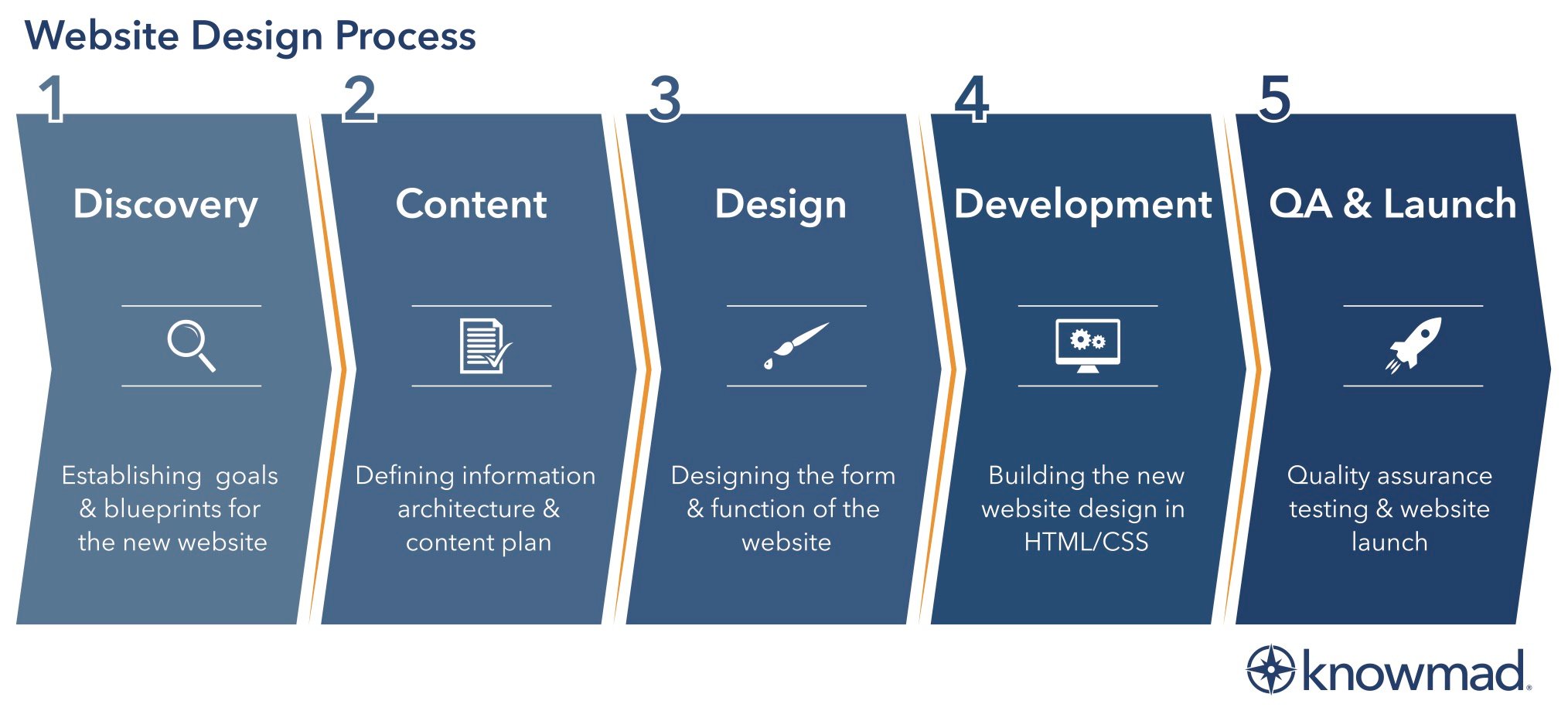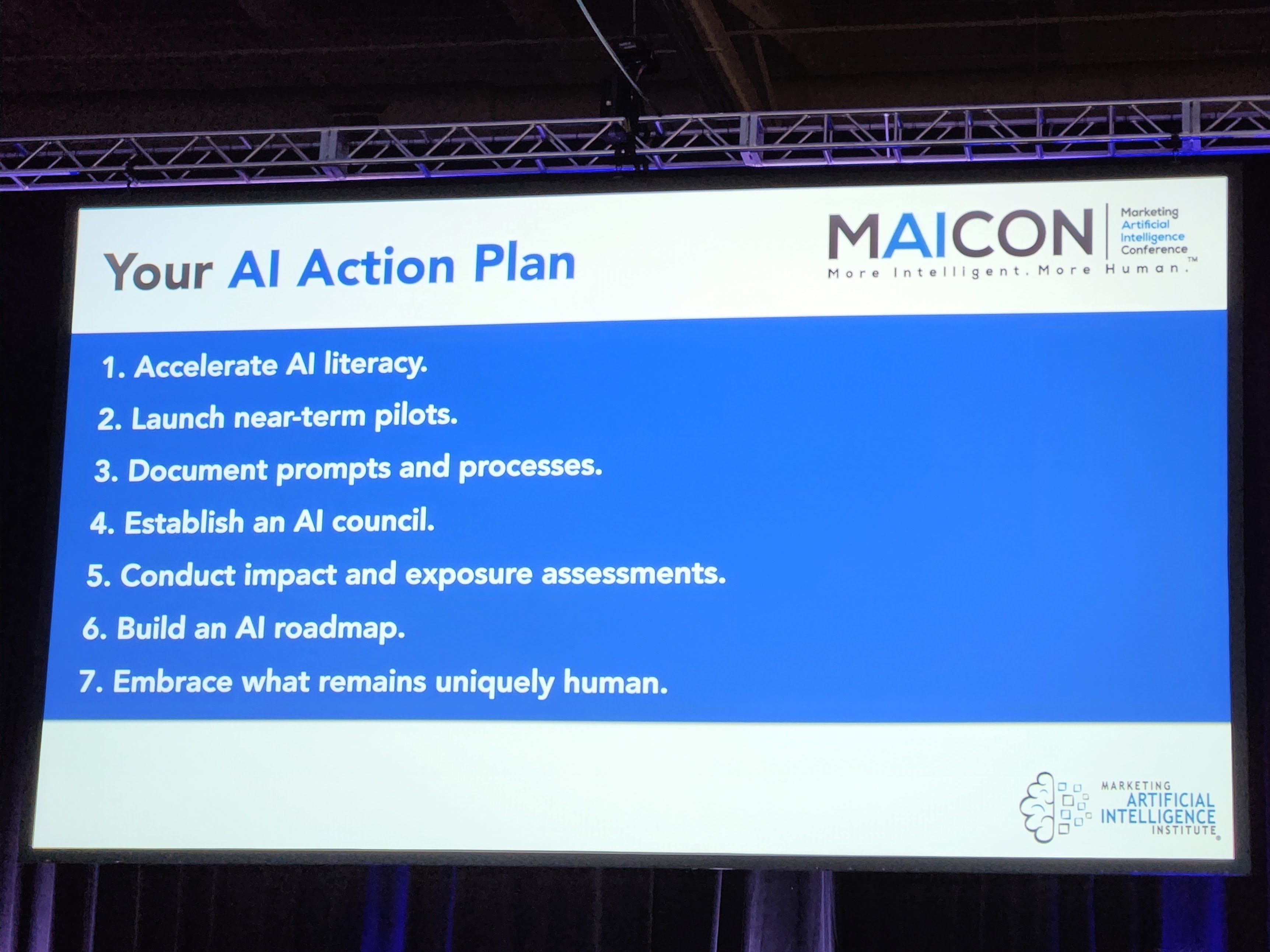author
William McKee
You may be thinking about hiring a website design firm, or you may have even begun your journey to a new or revamped site for your business. The modern website design process takes a lot of science--from technical development acumen with the latest platforms and tools to leveraging design skills--and a little art--the art of storytelling.
While the more scientific factors that drive the site development, user interface, and search engine optimization bring the internet crowds to your doorstep, it’s the user experience (UX), and how you tell your story at its core, that will win and keep their attention after they arrive. By focusing on intent, purpose, and UX, the design will unfold with the goal of getting visitor attention and keeping it. Over measurable time and across multiple pieces of content, the design will allow you to build trust and earn the right to move them through your business development funnel.
Modern Website Design for the Buyer Journey
You know who your audience is--it’s your target market of customers and, in the case of some B2B service providers, friendly referral sources. Your audience should influence your primary website success targets: Awareness, Acquisition, and Retention. These targets will influence the types of content you provide (some segments prefer “longer” content of 500 words or more, while others just need the quick and dirty).
Just as important as knowing your audience is knowing how to move them from new visitor to newly-minted customer. In some fields, potential customers need a library of articles for research, while in others, it’s a matter of making a knowledgeable product purchase happen in the fewest clicks possible. By understanding the buying journey and experience for your prospects, you can create effective entry points to sales, set proper expectations with buyers, and improve your overall close rate.
There’s a wealth of data out there (experienced website designers access it on a daily basis), that tracks how people engage brands through their websites and how they move along in the purchasing journey.
Looking for a shortcut to get started? Download our checklist:
Website Design Content Planning
Content moves the internet. It’s what shows up in search, whether it’s a link to a product or service page or something more dynamic like a blog article or press release.
In the modern age of the web, it’s important that your website content, especially from an ongoing basis in the form of blogs, newsletters, and social media, tells your story from as many angles as possible. Don't miss out on valuable content opportunities; ask sales and marketing team members all of the following questions:
- Do you have a breakthrough new product launching?
- Have you streamlined a process to allow for a lower price point with your service?
- Do you have thrilled customers who are willing to share their experience in the form of reviews or testimonials?
- Does your sales team have great clients they’d like to talk about?
- Does your company support your community through charitable giving and volunteerism?
Data-driven decision-making that powers beautiful design and a great user experience yields the highest ROI for websites.”
-William McKee, Managing Partner
The more you’re able to tell your story in different ways, the more people will engage with you, sharing your content on their social networks, and encouraging others to start a conversation with your company.
You should tell your story in as many media as possible (some are more expensive, like video and animation, than others, like copywriting, infographics, and podcasting). However many media formats you choose, make sure they’re all accessible on your site as resources to your visitors. A blog is a great way to share ongoing articles about industry leadership topics and news about your company.
Finally, make sure your keyword strategy lines up with content that meets your audience at every stage of the sales funnel. Your ultimate keyword list should take into account not just keyword volume, but also the buyer journey and conversion keywords at all four key stages:
- Awareness
- Education
- Consideration
- Decision
Let the User Experience Drive Web Design
HubSpot published an eye-opening piece on website design optimization, focused on user behaviors and attitudes that should heavily influence how you design an experience for them. The list also highlights the reason to choose a trusted web design company for the long haul, as these behaviors change over time--the meteoric rise in mobile engagement, for example.
Here are some of the more compelling statistics from the article, along with the recommendations they trigger:
- Strike the Right Balance: 39% of people will stop engaging with a website if images won’t load or take too long to load.
- Don’t Go Light on Aesthetics: 38% of people will stop engaging with a website if the content/layout is unattractive.
- People Have One Ultimate Goal, Contacting Someone for a Product or Service: 44% of website visitors will leave a company's website if there's no contact information or phone number
- If You’re Still Designing for the Desktop, You’re Doing It Wrong: Mobile devices now account for nearly 2 of every 3 minutes spent online.
- You Have to Catch Business Owners on the Fly, Not at a Desk: 40% of smartphone and tablet owners search for B2B products on those devices.
- Have Your Product and Service Information Quickly and Easily Accessible: 47% of website visitors check out a company's products/services page before looking at any other sections of the site.
- People Want to Know You, Too: Once on a company's homepage, 52% of visitors want to see "about us" information.
- Just Because They Were Directed to a Specific Place Doesn’t Mean They Won’t Check You Out: After reaching a company's website via a referral site, 50% of visitors will use the navigation menu to orient themselves.
Common Challenges for Website Design Projects
You hear all the time about how failure is the best teacher. While awards are certainly validating, there’s no better teacher than experience and learning from mistakes. Let’s take a look at five common challenges to consider when undertaking a website design project:
1. Poor Content Planning
A website project touches almost every aspect of your company. It’s important to have a clear vision and objectives for content established by the leadership team. This clarity will support decisions made throughout the project including design, content, and calls to action, and functionality. Without objectives, it’s easy to get distracted by trends or unnecessary elements that increase time and budget without adding value. While some companies focus on their website as a revenue-generating engine, others see it as more of an awareness and brand-building asset. These goals must be aligned with actual content planning and execution in order to be achievable.
It’s easy to veer off track with content planning. Use the 4Ps of Content Marketing to guide your process: Content Marketing Plan with the 4 Ps
2. Exceeding Timelines
Rushing a website project will lead to poor decisions or future rework. If there’s a business need to meet a specific date, a phased roll-out will work best. If you’ve waited for years to redesign your website, another couple of months will not likely impact your business. Many self-imposed deadlines can be arbitrary and detrimental, versus pursuing a build that’s planned and executed with everyone’s best interests in mind.
3. Unrealistic Expectations
Assumptions are often the hardest things to ferret out and bring into the open. As the internet has evolved, it’s become easier to use and easy to deploy new technologies. As stated earlier, a website design project is much more than a combination of text and images. It provides a superior user experience that lead to more visitor, more conversions, more leads, and more revenue.
As website design professionals, we use tools to reduce the likelihood of the unexpected; such as a Risk Analysis tool. It helps to define and manage potential issues that may arise over the course of the project to ensure that your website delivers a powerful online presence.
4. Lack of Communication
Your website is the face of your company. To be a success, it needs buy-in from the top to provide the vision & mission. As a project evolves, the vision for it will change. If the website project is handed off to an internal or external team without regular communication, it will result in an outcome that does not meet expectations. The process should be designed for bi-weekly progress meetings or updates to continue to align expectations with the work being delivered. Alignment between two or more marketing teams is very important.
5. Usability and Testing
One of the reasons a 4-6 month development process timeline works is to allow time for user testing. Professional web design teams will hold an internal review with the development team, a 2-week beta period to allow for client reviews and, in some cases, crowdsourced user testing to receive feedback from professional website testers.
If you plan to use a web design agency, be sure to ask how they handle these common challenges. Less mature agencies will make assumptions and lack the experience or processes needed to avoid these pitfalls. Remember, your website is delivering your public message to the world. It deserves a time period dedicated to testing, proofing, and sign-off among multiple decision makers. Launching a new design is a big deal, and a proper usability and testing period will help your team make it a success.
6. Our Process
Here’s the process that we follow to meet business goals while staying on time and on budget:

Smaller websites will require 3-4 months to go through this process whereas large websites can take 6 months or more depending on the functionality and page count.
Additional Considerations for the Modern Website Design Process
This process alone is not sufficient to ensure a successful outcome. Within each of the planning phases, there are tools, checklists, and job aids to ensure that both agency and client successfully complete the 4-6 month long journey to launching the new website.
Some additional elements of website design that you will need to consider as part of the project include:
- Content Management System (WordPress or HubSpot are great choices)
- Marketing tools (e.g., Google Analytics, HubSpot, Lead Forensics)
- CRM integration to hand off leads and provide marketing intelligence to your sales team
- Website functionality (e.g., news, events, product database, FAQ’s, database integration, customer/vendor portal, etc)
- User Testing
- Advanced Analytics
- Search Engine Optimization
Finally, you should always plan for change. Your vision for your website will evolve, ideas that sounded good on paper won’t work well online, and things will break. You can plan for and accommodate this natural part of the process by building flexibility into your plan and budget.
Preparation for Your Website Design Project
Whether you do-it-yourself or hire an agency, there are some things that you can do to reduce the friction and costs of a website redesign process.
Gather the following items (preferably in electronic format):
- Brand style guides, if available
- Sales and marketing materials that tell your brand story & unique value proposition
- High-res version(s) of your logo
- Photos of your business, its product(s), or service delivery
- Business goals that the leadership team wants to accomplish with the website (e.g., brand awareness, lead generation, sales support, customer service, hiring, vendor management, etc.)
- List of audience members & their needs from the website
- A wishlist of features or capabilities for your website
- Access to your visitor analytics to take current usage into consideration
How to Choose Your Website Design Team
Given the complexity and expectations for a business website, it requires a team to realize the full potential for your business. Here are the 5 essential roles of a modern website design team:
- Project Manager
- Marketing Strategist
- UX Designer
- Web Developer
- Content Specialist/Editor
Every website project requires the specialized skills that these roles provide. While you can build a website with a smaller team, they will need to take into consideration all of these roles. For this reason, most businesses choose to partner with an agency that can provide highly skilled specialists to maximize the value of this corporate asset.
Website Design Costs & Pricing
Pricing is the most common question. The costs of a modern website design are based on the talent and skills needed to implement your requirements. The more complex your design needs, the number of pages, extra functionality, and higher project management requirements will drive up costs. However, if the website returns 20-100 times its initial cost, it’s a smart investment.
If you hire a website design company to build a corporate website with a custom, mobile-friendly design, 15-20 pages, a blog and contact form, the price may start around $15,000. While it’s possible to build an inexpensive website, the adage “you get what you pay for” will apply. If you expect your website to be more than an online brochure and generate leads and sales, prepare to make an initial investment that will yield returns for years to come.
Need more info? Read a website design case study that shows how a redesign project improves lead volume by 50% or download our kick-off checklist:
.webp?width=900&height=548&name=wyatt-mobile%20copy%20(2).webp)


